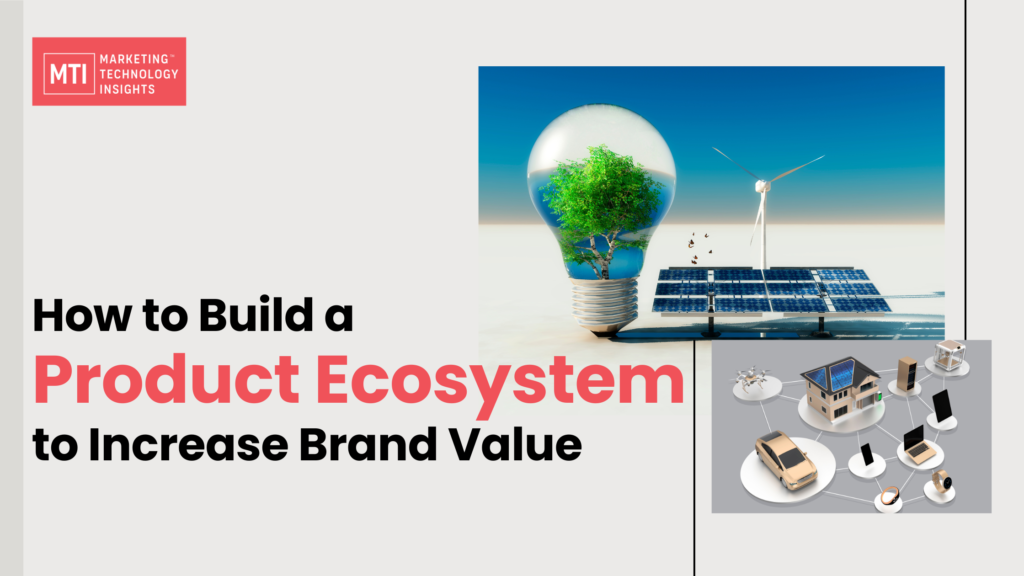When you hear “ecosystem,” images of frozen tundras or lush rainforests may spring to mind – and rightly so! Ecosystems operate through a delicate synergy between living and non-living elements, each vital for survival. Enter product ecosystems, not dissimilar! These emerge when a company interlaces various products to serve customers holistically. Think Apple and Adobe, masters of thriving product ecosystems.
But crafting a successful product ecosystem isn’t luck. It’s a deliberate process. For companies venturing into this realm, here are crucial steps to foster and fortify their product ecosystem:
1. Integrated Harmony: Align diverse products to complement and enhance each other’s functionality, offering customers a seamless experience.
2. Customer-Centric Approach: Prioritize user needs; ensure products within the ecosystem cater to various customer demands while interconnectedly solving their pain points.
3. Interconnectivity & Compatibility: Forge strong bonds between products, enabling smooth communication and compatibility, thus amplifying their collective value.
4. Evolving & Innovating: Continuously evolve and innovate components within the ecosystem to stay relevant and meet dynamic market demands.
5. Accessibility & Support: Ensure ease of access and provide robust support mechanisms, ensuring customers navigate and benefit effortlessly.
Crafting a flourishing product ecosystem demands foresight, adaptability, and a relentless focus on delivering holistic customer value.
How to Build a Product Ecosystem
You have multiple pathways to construct your Product Ecosystem. Here, we’ll delve into four fundamental steps crucial in this endeavour. These steps are versatile, and adaptable across diverse industries, ensuring their seamless integration into your unique process, regardless of your industry or sector.
1:- Know your customer
To maximize the value of your Product Ecosystem for buyers, addressing their challenges and pain points is pivotal. This begins by attentively listening to your customers. Engage them in discussions about what’s lacking in your current offerings and delve into their daily tasks. This insight empowers you to tailor your ecosystem effectively, surpassing their expectations. Here’s a comprehensive approach to better understand your customers and ensure the relevance of your ecosystem:
- Craft Buyer Personas: Develop detailed profiles representing your diverse customer segments. This aids in grasping varied needs and preferences.
- Conduct Focus Groups and Surveys: Engage customers directly through focus groups and surveys. Gather firsthand feedback to comprehend their desires and pain points.
- Analyze Competitors’ Ecosystems: Examine your competitors’ Product Ecosystems. This comparative analysis unveils gaps and opportunities for differentiation and improvement.
By amalgamating insights from buyer personas, direct engagements, and competitor analysis, you fortify your understanding of customer needs. This knowledge becomes the cornerstone for refining and augmenting your ecosystem, ensuring it resonates profoundly with your audience, and providing solutions that exceed expectations.
2:- Streamline the links within your product ecosystem.
Buyers gravitate toward ecosystems due to the inherent simplicity of navigating a unified brand’s suite of offerings. Take HubSpot, for instance; it empowers users to oversee their entire business spectrum seamlessly within a single system. As HubSpot customers expand, they effortlessly access additional products or tools, integrating them swiftly within the software’s ecosystem.
Simplified connections and integrations within your ecosystem amplify its value for customers. This simplicity fosters stronger brand loyalty, reducing the likelihood of customers seeking alternative ecosystems due to frustration or inefficiencies elsewhere. By streamlining these processes, businesses create an environment where customers not only find convenience but also remain engaged and committed to the brand experience.
3:- Consistent improvement
Initiating your product ecosystem involves an essential initial phase: seeking and absorbing customer feedback. However, this process must persist as your ecosystem evolves and broadens. Continuous engagement allows for the creation of ecosystem products precisely tailored to address customer needs. Moreover, it facilitates ongoing enhancements to individual components within the ecosystem, ensuring relevance and sustained value for customers throughout their journey within it. This iterative approach not only fine-tunes existing elements but also informs strategic updates, preserving the ecosystem’s attractiveness and utility for customers.
4:- Make your Ecosystem welcoming
By diligently following the outlined steps, reaching this final phase should be seamless. Nonetheless, reinforcing the necessity for your product ecosystem’s value remains critical for customer adoption. Imagine this: an ecosystem lacking coherence or potency among its components won’t resonate with your target audience or customers. For an ecosystem to thrive, its products must seamlessly collaborate, each feature enhancing the collective functionality.
Successful ecosystems serve as prime illustrations of this synergy. Examining these triumphs offers valuable insights into their cohesive functioning. Studying such examples provides a clearer perspective on how different components harmonize, illustrating the pivotal role of collaboration within an ecosystem. This comprehension guides in shaping a robust and harmonious product ecosystem, setting the stage for resonating with your audience effectively.
Ex: Apple ecosystem
The Apple ecosystem embodies the seamless integration among various Apple devices – the iPhone, iPad, MacBook, Apple Watch, AirPods, and Apple TV – creating a synchronized and cohesive user experience.
Let’s explore some key components within this ecosystem:
iPhone: As Apple’s flagship product, the iPhone has redefined smartphones. Its integration across devices ensures effortless access to photos, messages, and apps.
Mac: Ranging from MacBook Air to Mac Studio, Apple’s computers offer both power and sophistication. Paired with macOS, they harmoniously sync tasks, allowing seamless transitions between devices.
iPad: Positioned between iPhone and Mac, the iPad blends mobility and capability. Optimized by iPadOS, it excels in creative tasks, especially when paired with the Apple Pencil.
Apple Watch: Beyond a timepiece, it extends the iPhone’s functionalities, tracking health, and controlling smart home devices, deeply ingrained in the ecosystem.
Apple TV: Elevating the TV to a smart hub, it facilitates streaming and screen mirroring from Apple devices.
AirPods and HomePod: Not merely audio devices, they seamlessly integrate with Apple products. They auto-pair and, with Siri integration, grant hands-free access to music and messages.
These devices transcend individual functionalities, working harmoniously within a larger interconnected family, amplifying user experiences across the Apple ecosystem.
Conclusion
In the pursuit of elevating brand value, constructing a robust product ecosystem stands as a paramount strategy. The journey to crafting an impactful ecosystem is guided by a comprehensive understanding of customer needs and market dynamics. Central to this endeavour is the recognition that a product ecosystem transcends individual offerings; it’s an interconnected suite designed to seamlessly address consumer pain points and desires.
Building a successful product ecosystem necessitates meticulous attention to integration, where diverse products harmonize to provide a unified and holistic user experience. It involves creating a cohesive network that caters to evolving customer demands, enhancing brand loyalty by offering convenience and efficiency.
Moreover, the core of a thriving product ecosystem lies in continuous innovation and adaptability. Businesses must perpetually evolve their offerings, staying attuned to market trends and emerging technologies. This adaptive approach ensures relevance, positioning the ecosystem as a dynamic solution that stays ahead of customer expectations.



